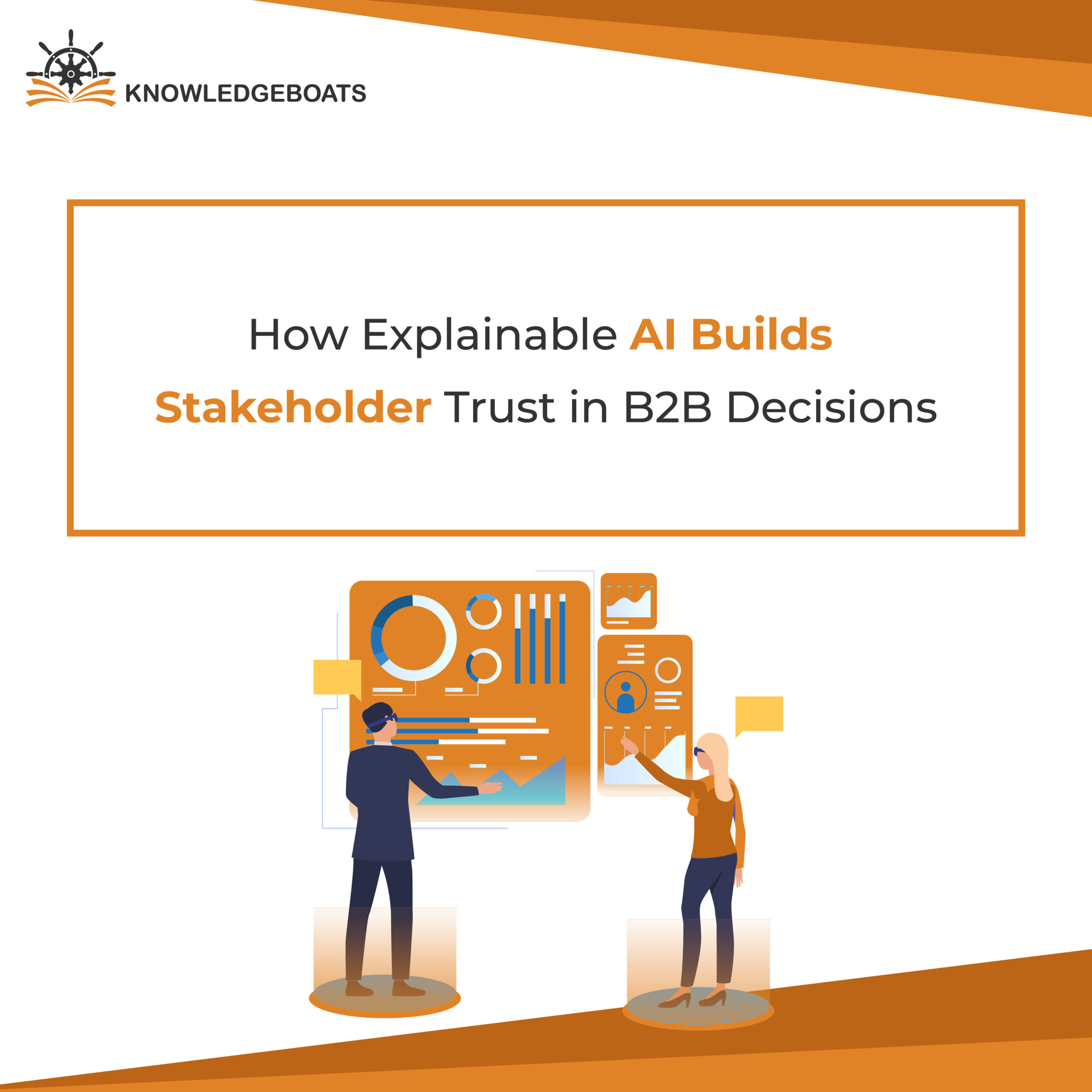
We’re all being asked to bet bigger and bigger on technology we don’t fully understand. We have AI tools that can do jaw-dropping things, predict market shifts, pinpoint our most valuable leads, and streamline operations in ways we couldn’t have imagined five years ago.
The results are there. But when you get right down to it, there’s often a black box sitting in the middle of our most critical decisions.
You trust what the prediction, the recommendation, the final number will be. But the why is a complete mystery. It’s like having a brilliant analyst on your team who never speaks a word. They just slide a piece of paper across the table with the answer on it.
Would you stake your reputation on that? Would you stand in front of your board and base your entire quarterly strategy on a recommendation you can’t explain?
That knot in your stomach is real. It’s the gap between data and trust. And it’s why Explainable AI (XAI) isn’t just another buzzword, it’s one of the most important conversations we need to be having in business right now.
So, What Are We Actually Talking About?
Forget the jargon for a second. At its heart, explainable AI is about one thing: getting a straight answer.
It’s about peeling back the layers of a complex algorithm and seeing the logic inside. It’s the difference between being handed a verdict and being shown the evidence. It lets us ask our smartest tools the most basic human question: “Why?”
When we talk about XAI in B2B decision-making, we’re talking about turning that black box into a glass box. We’re building a bridge from blind faith to informed confidence, and that changes everything.
This Isn’t About Curiosity. It’s About Survival.
Building trust with explainable AI is fundamental to your business for a few very real reasons:
- Your Team Won’t Use What They Don’t Trust. Imagine telling a seasoned sales director to ignore her gut and chase a lead the AI picked. Her first question will be, “Why that one?” If the answer is “Because the algorithm said so,” you’ve just created resentment and skepticism. But if the answer is, “Because that lead’s company just received Series B funding and they’ve spent 20 minutes on our pricing page,” you’ve just created a believer.
- You Are Always Accountable. When a regulator asks why a business loan application was denied, “the AI did it” is a career-ending answer. You are responsible for every decision made under your roof. An explainable AI framework gives you that crucial audit trail. It helps you find and fix hidden biases in your models before they become a legal or PR disaster.
- You Can’t Fix What You Can’t See. When a black box AI makes a mistake, you’re left guessing. When an explainable model gets it wrong, it shows you its work. You can see precisely where its logic went sideways, allowing your team to turn failures into lessons and make the tool smarter for next time.
How to Ask an AI “Why?”
Okay, let’s get slightly technical, but I promise, no code. Think of these model interpretability techniques as different ways to have a conversation with your AI.
- The “What If?” Machine: This is my favorite because it’s so human. It answers the question, “What’s the smallest change we could make to get a different result?” For a customer flagged as a churn risk, it might tell you, “If they had used Feature X just one more time this month, they wouldn’t be on this list.” Suddenly, you have an action plan. This is how you start using counterfactual explanations to convince stakeholders, because it turns problems into strategies.
- Divvying Up the Credit (LIME & SHAP): These are clever ways to figure out which factors mattered most. Imagine a prediction is a team victory. SHAP is like the coach giving each player an MVP score, showing exactly how much their contribution helped or hurt the outcome. LIME is simpler; it’s like poking the model “What happens if I change this one little thing?” to see how the decision changes. The role of SHAP and LIME in B2B AI transparency is to provide that evidence.
- Global vs. Local Explanations: Sometimes you need to understand the AI’s overall strategy (global explanations). Other times, you just need to know why it made one specific call right now (local explanations). Knowing the difference between global vs local XAI is key, your board needs the big picture, your team on the ground needs the specifics.
It’s Time for a Real Partnership
The real goal here isn’t just to implement another piece of tech. It’s to build a culture where technology empowers our judgment instead of replacing it.
It starts by demanding more than just answers from our tools. We need to demand understanding.
Explainable AI for stakeholder trust is what makes that possible. It transforms AI from a mysterious oracle into a transparent, accountable partner. It gives us the confidence to not only trust the recommendation, but to stand behind it. And in the end, that’s the only way we’ll be able to truly lead.


